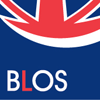Virtually invisible orthodontic appliances fixed to the back of the teeth
Braces fitted behind the teeth, are described as lingual, from lingua, the Latin word for tongue. Concealed on the inside of the teeth, they are most often worn by adult private patients who want their teeth straightened but don’t want to be seen in braces.
About 10% of the UK’s 960 registered orthodontic specialists offer the lingual technique, and the number is growing. As with all brace systems which are fixed to teeth, they allow for greater three dimensional control than removable treatments and can treat and improve a wider range of problems.
There are many lingual systems, including customised and non-customised options. It’s also possible to have invisible lingual braces on your upper teeth and standard braces on lower teeth.
A small risk of orthodontic treatment is decalcification, an attack on tooth enamel producing white marks, usually the result of poor diet and poor oral hygiene. One benefit of lingual braces is that they are less likely to mark teeth than standard braces. This is supported by research which (1) shows that the damage which can occur is likely to be less severe and less frequent on lingual surfaces.
(1) van der Veen MH, Attin R, Schwestka-Polly R, Wiechmann D. Caries outcomes after orthodontic treatment with fixed appliances: do lingual brackets make a difference? Eur J Oral Sci 2010; 118: 298–303
Find out more
 British Lingual Orthodontic Society
British Lingual Orthodontic Society
In the UK, the British Lingual Orthodontic Society (BLOS) brings together specialist orthodontists who undertake this type of treatment. BLOS can provide more information on lingual orthodontics as well as a map of where to find your nearest lingual orthodontist.
- Conventional fixed appliances
Much of the information about conventional fixed appliances will also apply to lingual braces.